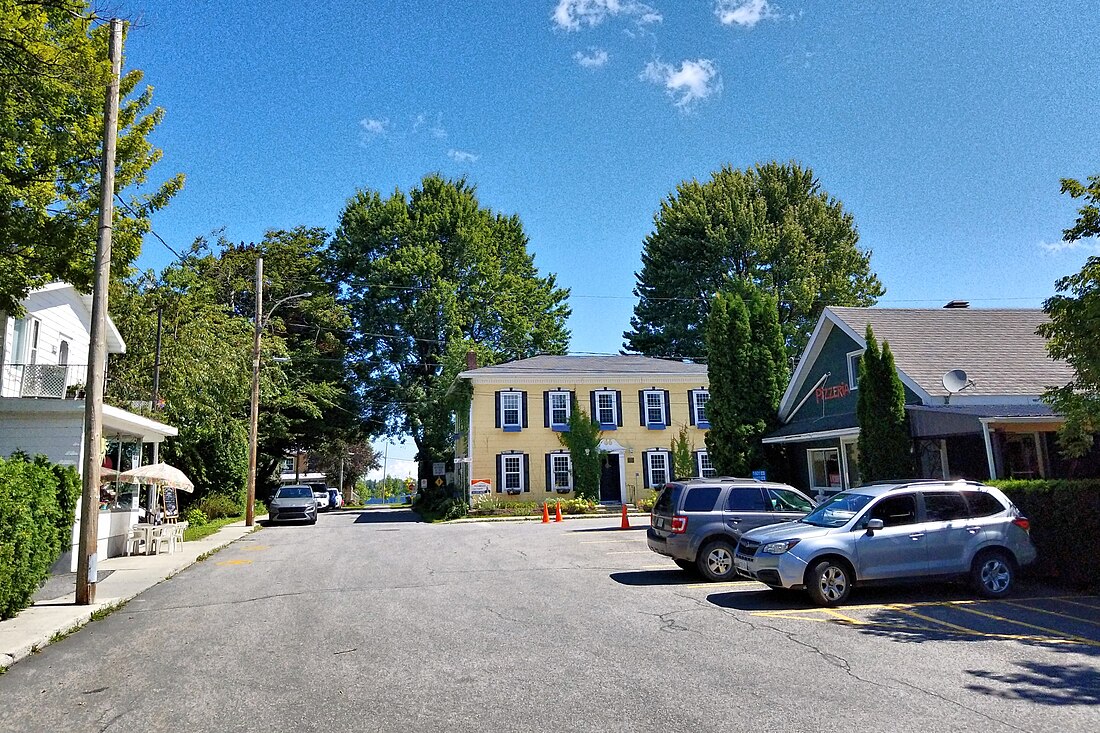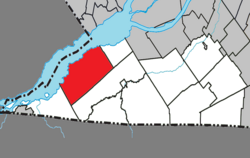Top Qs
Timeline
Chat
Perspective
Saint-Anicet
Municipality in Quebec, Canada From Wikipedia, the free encyclopedia
Remove ads
Saint-Anicet is a municipality in Le Haut-Saint-Laurent Regional County Municipality in the Montérégie administrative region of Quebec. The population as of the Canada 2021 Census was 2,754.
Remove ads
History
In 1788, the geographic township of Godmanchester was surveyed, and by 1795, a group of Acadians had settled in the area, followed by Irish and French Canadians. In 1810, a mission was established, named after Pope Anicetus. It became the Parish of Saint-Anicet-de-Godmanchester in 1827. In 1851, its post office opened.[1]
On July 1, 1845, the Parish Municipality of Saint-Anicet was formed, but merged into the Municipality of Beauharnois Number Two on September 1, 1847 (along with Dundee, Hinchinbrooke, Hemmingford, Godmanchester, Russeltown, and Ormstown). It was reestablished on July 1, 1855.[1][5]
On December 10, 2011, the parish municipality changed statutes to become a regular municipality.[1][5]
Remove ads
Geography
Saint-Anicet is located in the southwestern Montérégie region of Quebec, on the south shore of the Saint Lawrence River.
Communities

In addition to the namesake main population centre, the following locations reside within the municipality's boundaries:[1]
- Cazaville (45°05′11″N 74°22′17″W) – a hamlet in the southern portion of the municipality on Route 132.
- Plage-Somerville (45°05′15″N 74°25′31″W) – a hamlet located on Baie de Somerville in the Saint Lawrence River.
- Pointe-Leblanc (45°04′30″N 74°26′26″W) – a hamlet located along the Saint Lawrence River.
- Port Lewis (45°10′14″N 74°16′59″W) – a hamlet located along the Saint Lawrence River on Route 132.
Lakes and rivers
The following waterways pass through or are situated within the municipality's boundaries:[1]
- Rivière La Guerre (45°08′40″N 74°21′03″W) – runs in a southeast to northwest direction to the Saint Lawrence River.
Remove ads
Demographics
Population
Language
Remove ads
Attractions

In the south of Saint-Anicet, the Tsiionhiakwatha/Droulers archaeological site interpretation center is where an important Iroquoian village in Quebec was located. Circa 1450, approximately 500 St.Lawrence Iroquoians established a village near the La Guerre River. The centre opened on May 15, 2010.[10]
Droulers-Tsiionhiakwatha was designated a Site du patrimoine constitué under provincial legislation in 2005,[11] and a National Historic Site of Canada in 2007.[12]
Remove ads
Government
List of former mayors:[5]
- John McDonell (1855–1858)
- Luc Hyacinthe Maçon (1858–1860)
- Augustin Dupuis (1860–1864, 1866–1872)
- Edward Dupuis (1864–1866, 1872–1875, 1886–1888)
- Louïs Napoléon Mason (1875–1886, 1889–1890)
- Johan D. Mac Donald (1890–1892, 1895–1896)
- Alexis Caza (1892–1894)
- Patrick W. Leehy (1888–1889, 1894–1895, 1897–1899, 1902–1903, 1905–1906, 1909–1910)
- Joseph Edouard Dupuis (1896–1897, 1899–1902, 1903–1905, 1906–1907)
- Anicet N. Castagnier (1907–1908)
- Eusèbe Génier (1908–1909, 1910–1912)
- Ronald Rankin (1912–1913, 1916–1917)
- John Leahy (1913–1914)
- Napoléon Leblanc (1914–1915)
- Olivier Dupuis (1915–1916)
- Joseph Avila Caza (1917–1925, 1929–1933)
- Joseph Alfred Primeau (1925–1927)
- François Xavier Beauchesne (1927–1929)
- F. Emilio Latreille (1933–1935)
- James B. Narey (1935–1939)
- Joseph Charles Idala Caza (1939–1947)
- Edmour Castagner (1947–1949)
- Charles Trépanier (1949–1953, 1955–1959)
- Lucien Perron (1953–1955, 1959–1980)
- Joseph Cléo Renaud Caza (1980–1981)
- René Brisebois (1981–1990)
- Pierre Caza (1990–1994)
- Claude Gilles Pilon (1994–1998)
- Alain Castagner (1998–2017)
- Gino Moretti (2017–present)
Remove ads
Notable people
- Jules Léger - 21st Governor General of Canada
See also
References
External links
Wikiwand - on
Seamless Wikipedia browsing. On steroids.
Remove ads



